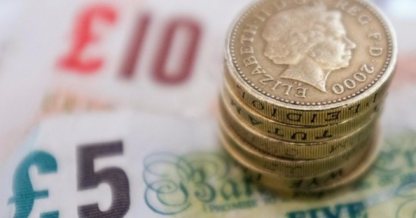Last week, affected by the Fed's hawkish remarks, the US dollar index broke through the 100 mark, but the safe-haven demand caused by the conflict between Russia and Ukraine still supported the gold price. Both the bulls and the bears were cautious. After the gold price fluctuated higher, it closed at $1,943.90 per ounce.
Fed rate hike pressures gold prices
According to the survey, most investors believe that as long as the Fed maintains a hawkish stance on interest rate hikes and plans to sell off some of its bond purchases related to the epidemic, the dollar will continue to dominate.
It is understood that the U.S. dollar index rose nearly 7% last year, continuing its excellent performance, and has continued to rise 4% so far this year, including a rise of about 2% in March alone. Much of the momentum has been fueled by recent comments from Fed officials.
At present, in addition to calling for a 50 basis point interest rate hike, Fed officials have also publicly stated that they will vigorously reduce the size of their nearly $9 trillion balance sheet. That pushed U.S. Treasury yields to multi-year highs and investors turned to dollar-denominated assets, a key factor in the greenback's strength and not expected to subside anytime soon.
The recent wave of de-dollarization in many countries due to sanctions by Western countries, as the U.S. dollar is the most widely used currency in trade, financial transactions and central bank reserves, but explicitly weaponizing the U.S. dollar in this way, the U.S. and Its allies risk weakening the dollar.
It is undeniable that since the collapse of the Bretton Woods system in 1973, the US dollar has maintained its dominance without the support of a global exchange system arrangement. Whereas previous examples of financial warfare have mostly been concerned with preventing funds from being used for terrorism or deployed in specific circumstances like Iran’s nuclear program, sanctions against a country of Russia’s size and power are unprecedented, and for better or worse, it could be a world An opportunity for financial rule change.
Global gold reserves hit record high
According to the latest data released by the International Monetary Fund (IMF), as of the end of February 2022, the global official gold reserves totaled 35,616.5 tons.
Among them, the euro area (including the European Central Bank) totaled 10,773.0 tons, accounting for 52.5% of its total foreign exchange reserves. In addition, the People's Bank of China's gold reserves at the end of March were unchanged at 1,948.3 tons, unchanged from the end of February 2022.
Since the global official gold reserves announced by the International Monetary Fund generally have a certain time lag, most central bank data actually end at the end of February 2022, and some central bank data end in January 2022 or earlier.
Global central bank gold reserves fell by 6 tonnes in February, extending last month's trend of net gold sales, the first such occurrence since 2020. Global gold reserves remain above 35,600 tonnes, the highest level since 1990, despite a drop of 18 tonnes so far this year.
Recent increases and decreases in gold reserves have occurred in only a handful of central banks, with one or two major changes again dominating the month. Uzbekistan's central bank was the biggest gold seller for the month, with gold reserves falling by 22 tonnes to 339 tonnes.
This is the bank's lowest gold holdings since December 2020. This is not the first major transaction in Uzbekistan in recent years; active management of gold reserves means that changes in reserves can occur from time to time. And even after the February gold sale, Uzbekistan's gold reserves still account for 59% of its total reserves.
In the post-rate hike era, how will the gold price go?
Real interest rates usually show a negative correlation with gold prices, which gradually fell when the last round of Fed tightening pushed the 10-year real interest rate upward. At the end of 2021, the Fed's new round of tightening expectations began to heat up, leading to an increase in real interest rates. However, due to the continued rise in U.S. inflation, the price of gold did not show a significant downward trend.
Since the beginning of this year, the conflict between Russia and Ukraine has led to a substantial inflow of safe-haven funds into gold and U.S. bonds, driving the price of gold to rise and real interest rates to decline in stages. The signal superimposed that the conflict between Russia and Ukraine has eased, the real interest rate has risen sharply, and the price of gold has fallen accordingly.
In the future, if inflation gradually falls as expected, it is expected that the real interest rate will further rise with the tightening pace of the Federal Reserve, or will turn from negative to positive within the year, and the price of gold is expected to continue to fluctuate and decline.
The real interest rate is critical to the economy and financial asset prices but cannot be directly observed. Although there are certain shortcomings in using the TIPS rate to represent the real interest rate, it is still a more direct and appropriate representation of the real interest rate.
Economic growth and monetary policy are the main factors driving changes in real interest rates. After the 2008 financial crisis, a long-term overly loose monetary policy is the reason for pushing real interest rates close to zero or even negative. Real interest rates are expected to gradually rise to positive territory during the year. The real interest rate gap between China and the United States reflects the limited depreciation pressure of the RMB exchange rate, and the continued rise of real interest rates in the future may have a certain inhibitory effect on the price of gold.
 2022-04-11
2022-04-11
 1069
1069





 简体中文
简体中文
 ภาษาไทย
ภาษาไทย
 繁體中文
繁體中文
 Indonesia
Indonesia











